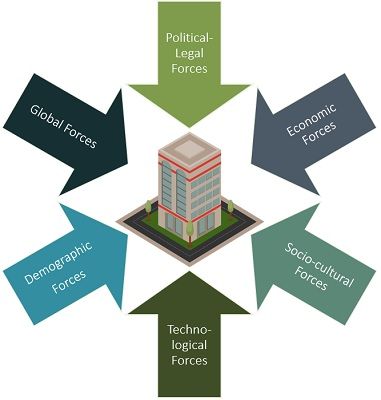7 Components of the Macro-Marketing Environment

The macro-marketing environment consists of various external factors that impact an organization's marketing activities but are beyond its direct control. These factors influence the overall marketing strategy and decision-making. The macro-environment is often analyzed using the PESTLE framework, which stands for Political, Economic, Sociocultural, Technological, Legal, and Environmental factors. Here are the seven components of the macro-marketing environment:
-
Political Factors:
- This component includes government policies, regulations, and political stability that can affect business operations. Changes in government leadership, trade policies, taxation, and legal frameworks can impact a company's marketing strategies.
-
Economic Factors:
- Economic conditions, both on a global and local scale, can significantly influence marketing decisions. Factors such as economic growth, inflation rates, interest rates, exchange rates, and overall consumer spending patterns play a crucial role in shaping market opportunities and challenges.
-
Sociocultural Factors:
- Sociocultural factors encompass cultural norms, values, demographics, and societal trends that influence consumer behavior. Understanding these factors is essential for tailoring products, services, and marketing messages to meet the preferences and expectations of diverse target audiences.
-
Technological Factors:
- Advances in technology have a profound impact on marketing. Innovations, automation, digitalization, and changes in communication channels can create new opportunities and challenges for companies. Staying abreast of technological trends is crucial for remaining competitive.
-
Legal Factors:
- Legal factors include laws and regulations that affect business operations. This encompasses areas such as consumer protection, competition laws, intellectual property rights, and other legal frameworks that influence how companies can conduct their marketing activities.
-
Environmental Factors:
- Environmental concerns, sustainability issues, and corporate social responsibility are increasingly important in the macro-environment. Consumers are becoming more environmentally conscious, and companies are expected to consider the ecological impact of their products and operations.
-
Ethical Factors:
- While not always explicitly included in the traditional PESTLE framework, ethical considerations are increasingly recognized as a significant component of the macro-environment. Companies are under growing pressure to engage in ethical business practices, and ethical considerations can influence consumer perceptions and brand reputation.
Analyzing and monitoring these macro-environmental factors is crucial for organizations to identify opportunities and threats, adjust their marketing strategies, and stay responsive to the dynamic external landscape. Successful marketers carefully assess each component to develop strategies that align with the prevailing conditions and anticipate future trends.
Thank you,
